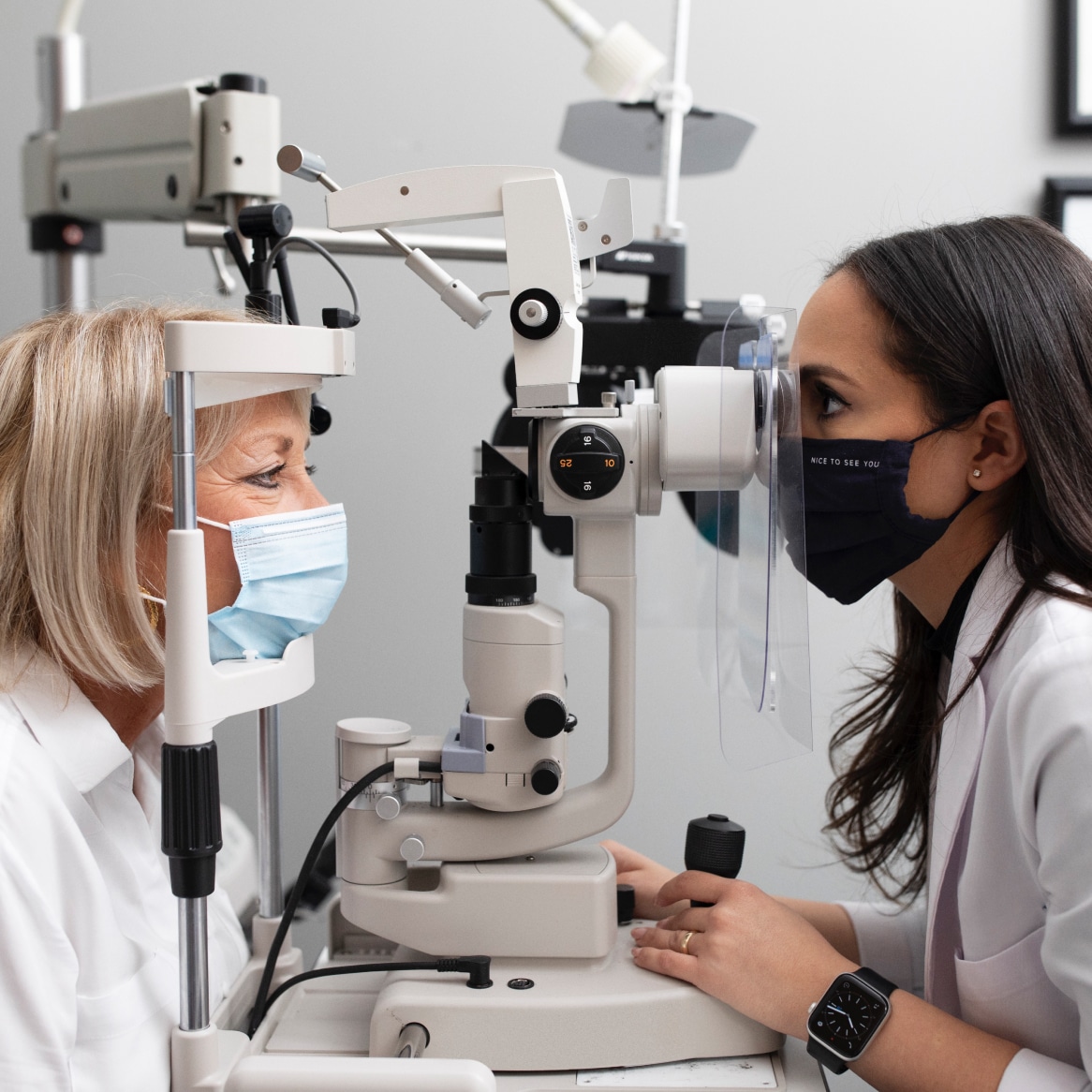Chances are you’ve had the experience of being startled by something you’ve seen out of the corner of your eye. Maybe someone snuck up on you, a bug whizzed by, or you just sensed motion off to the side.
That corner-of-the-eye vision is called peripheral vision, also known as your side vision.
In this article, we’ll take a closer look at what peripheral vision is and why it’s important for your eyesight. We’ll also discuss peripheral vision loss and its causes, symptoms, and treatment.
Peripheral vision is everything you see outside your central vision. It’s the top, bottom, left, and right of your central vision without moving your head.
When you look straight ahead, what you can see in front of you is your central vision, which is around 60 degrees (30 degrees per eye). Everything else outside of that 60 degrees is your peripheral vision, which covers approximately 120 degrees from side to side, 60 degrees up, and 75 degrees down.
Add central vision and peripheral vision together, and you get your entire visual field or field of vision.
So why is your peripheral vision important? Your central vision is usually a lot more detailed than your peripheral vision. But having that peripheral view expands your field of vision beyond what you’re focusing on directly.
With peripheral vision, your eyes can detect shapes and motion at the edges of your visual field, even if those things aren’t as sharp as they might be in your central vision. This visual information allows you to be aware of what’s going on around you. So, it’s easier to do daily activities like driving, playing sports, and even just walking around without bumping into things.
Peripheral Vision Loss
Peripheral vision loss is a partial or complete loss of peripheral vision. It shrinks your field of vision. This can cause blind spots, but it usually doesn’t mean total blindness. Someone with a loss of peripheral vision often still has central vision. Peripheral vision loss can make it difficult to see anything that isn’t straight in front of you.
Sometimes, peripheral vision loss can be temporary. But, depending on the cause, it could be permanent. Both are important and need to be checked out by a doctor as soon as possible to investigate further.
What Is Tunnel Vision?
Medically, tunnel vision is peripheral vision loss that strongly reduces or eliminates peripheral eyesight but leaves central vision intact. The result is a tunnel effect, like looking through a tube or a peephole.
Tunnel vision can severely affect your ability to engage in activities, especially those involving mobility, like walking or riding a bike. But it can even affect relatively motionless activities, too. For instance, someone with tunnel vision might have difficulty reading because they can only see a few words at a time.
Peripheral Vision Loss Symptoms
Peripheral vision loss itself is a symptom of some eye and health conditions. (We’ll get to these in a bit.) But peripheral vision loss has signs that may not be obvious. And sometimes, these signs can develop so slowly that you don’t notice them at first.
The signs of peripheral vision loss depend on how much loss you’re experiencing and whether it’s in one eye or both. But you may become aware of symptoms even if you only partially lose peripheral vision.
Peripheral vision loss symptoms might include:
- The feeling of looking through a tunnel
- Loss of balance or tripping
- Difficulty navigating through crowds
- Bumping into things when walking
- Poor low light or night vision
- Difficulty driving
- Light flashes or eye floaters
If you experience peripheral vision loss symptoms, make an appointment with an eye care provider. And if you notice sudden vision changes of any kind, seek emergency medical care.
Causes of Peripheral Vision Loss
Peripheral vision problems can be symptoms of a serious eye disorder or disease, or another health condition. If not detected or treated, some eye conditions can lead to significant vision loss or legal blindness. These conditions can have various causes, including damage to the retina, like optic nerve, macular, or blood vessel damage. Other causes could be brain-related.
Some eye disorders and diseases that can cause a loss of peripheral vision are:
- Diabetic retinopathy
- Glaucoma
- Optic neuritis
- Retinal detachment
- Retinal vein occlusion
- Retinitis pigmentosa
Other medical conditions that can cause peripheral vision loss include:
- Carotid artery disease
- Concussions
- Hypertension (high blood pressure)
- Migraine headaches
- Stroke
How Is Peripheral Vision Loss Diagnosed?
To properly diagnose peripheral vision loss, an eye care provider runs a peripheral vision test (perimetry test). The peripheral vision test examines how well you see across your entire visual field.
Your doctor may do a peripheral vision test during a comprehensive eye exam. Factors like your age, any symptoms you’re having, your family history, and whether or not you have an eye condition can influence whether or not you’ll need a peripheral vision test.
Peripheral Vision Loss Treatment
Your eye doctor will recommend the best treatment for your peripheral vision loss. Sometimes, losing peripheral vision is a temporary issue. But it could be a permanent change to your eyesight that may require lifestyle changes.
Depending on the cause, treatment options for peripheral vision loss may include medication or surgery. Prism glasses might help those with loss of peripheral vision by expanding the visual field. In some cases, fending off further vision deficits is the main course of action.
Take Care of Your Peripheral Vision
To see well, you need central vision and peripheral vision. As with so many health conditions, prevention is the best treatment for peripheral vision loss. Keeping up with annual eye exams is essential to preserve the health of your eyes. And see an eye doctor right away if you suspect an eye health issue, including any loss of vision, peripheral or central.







